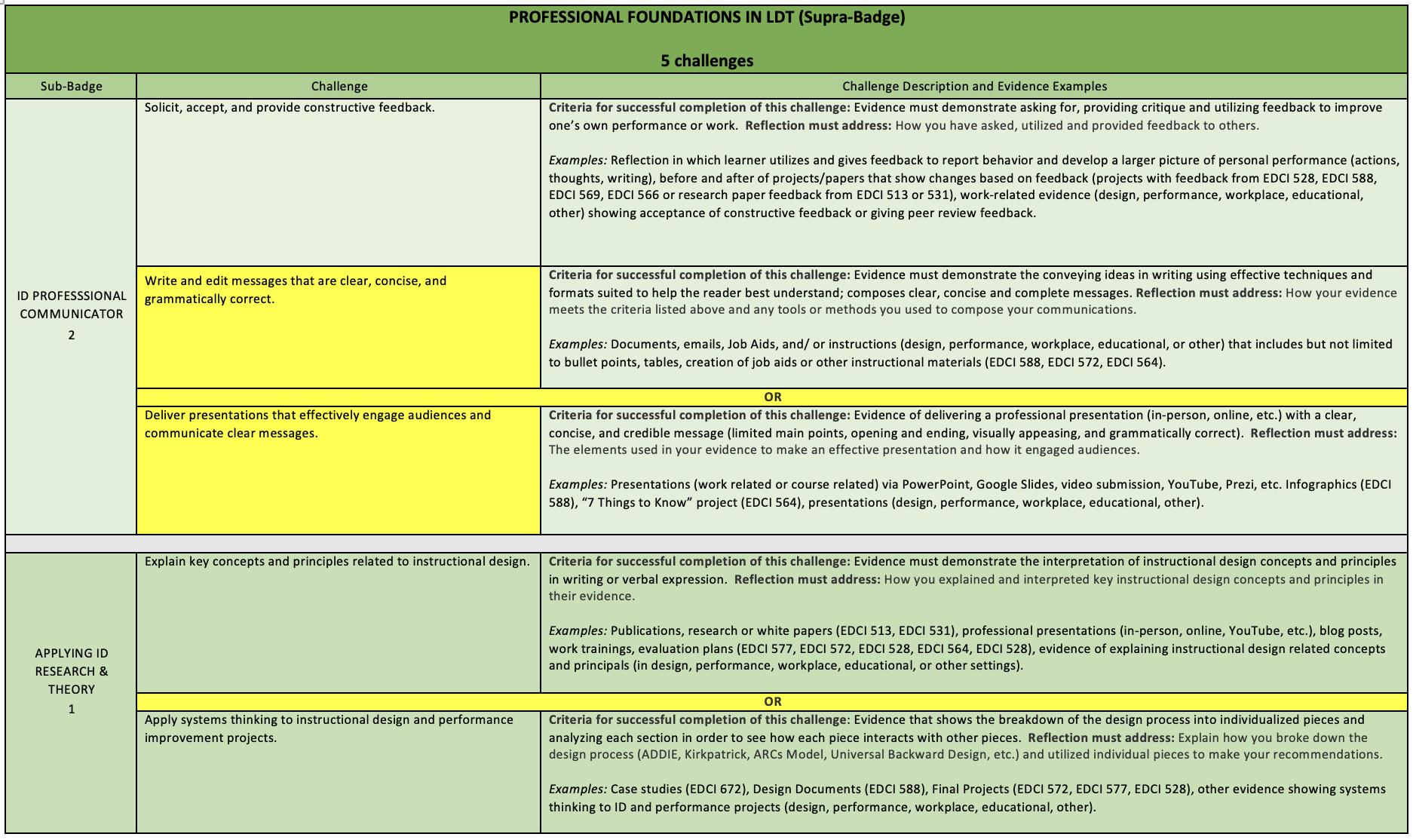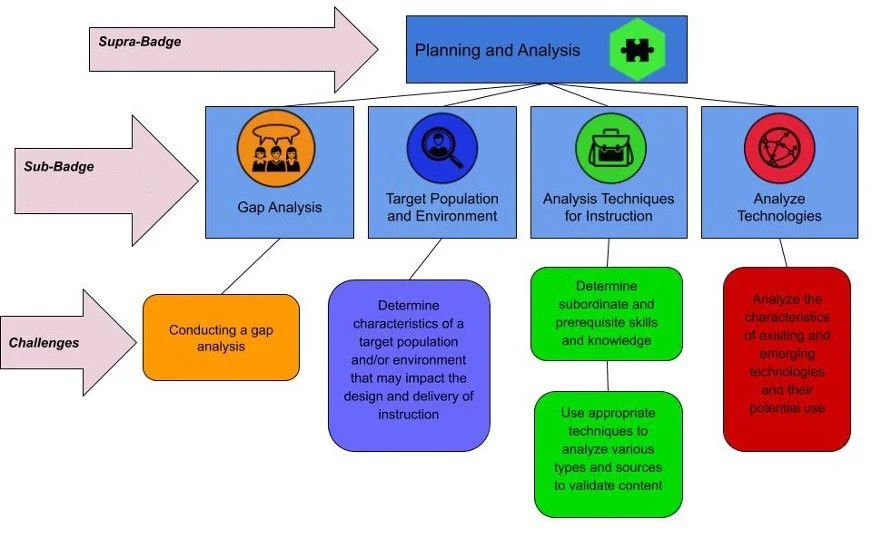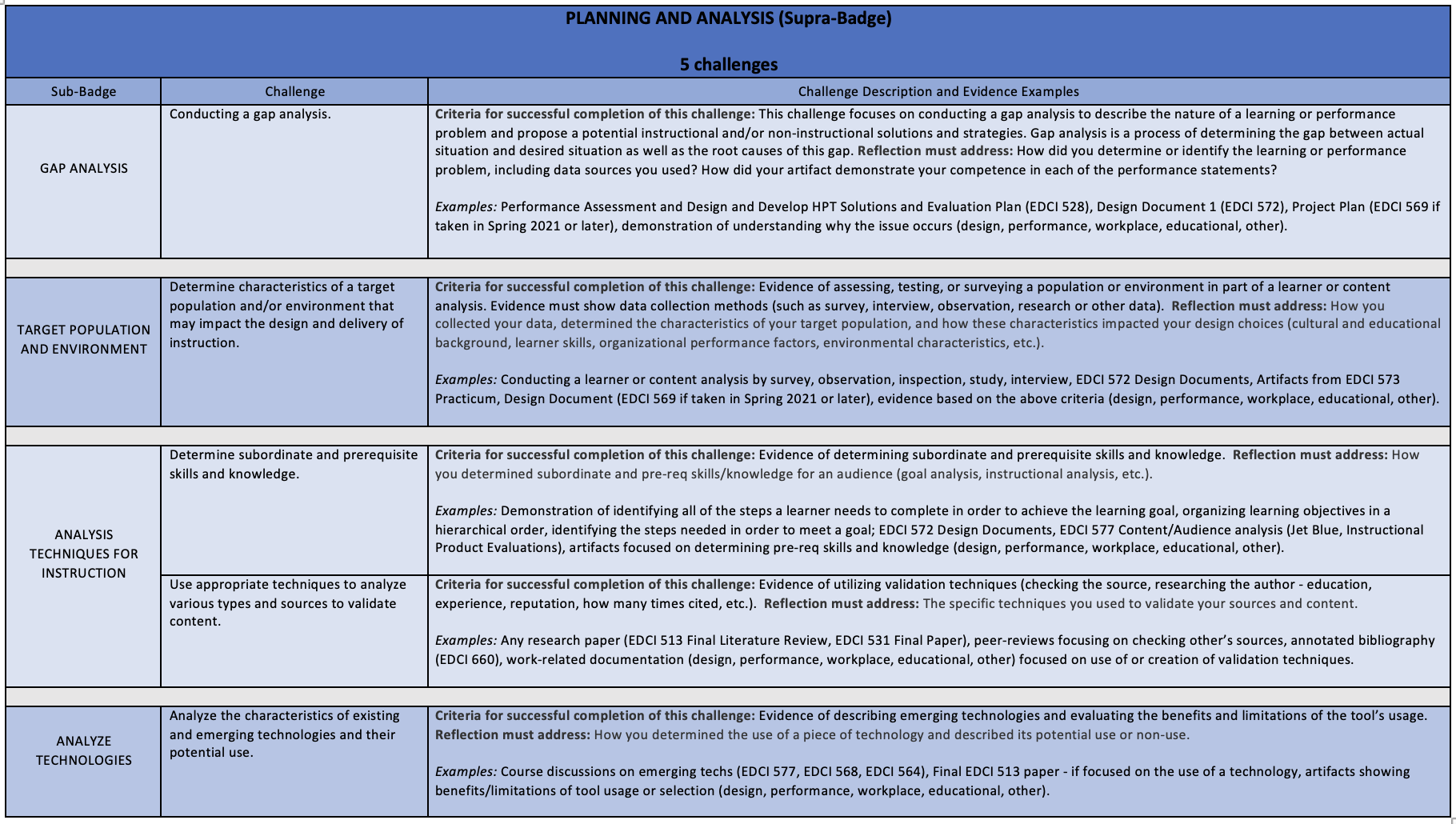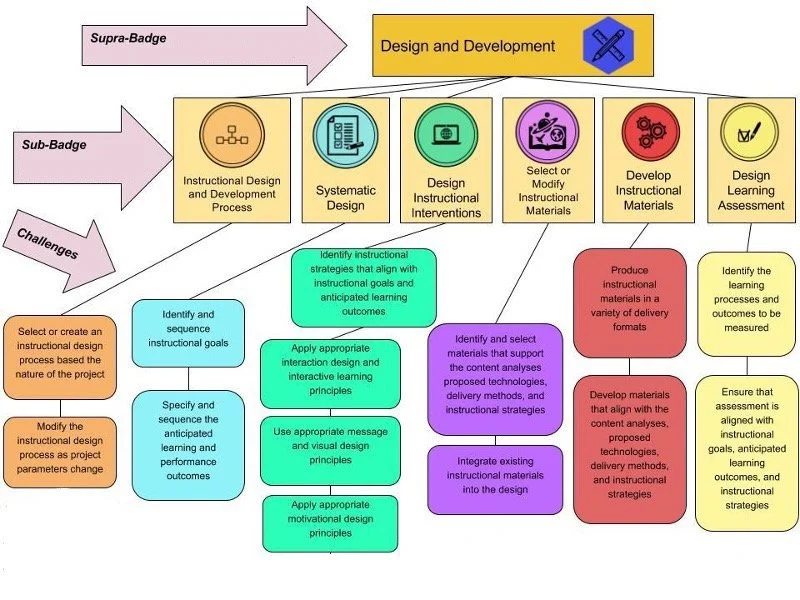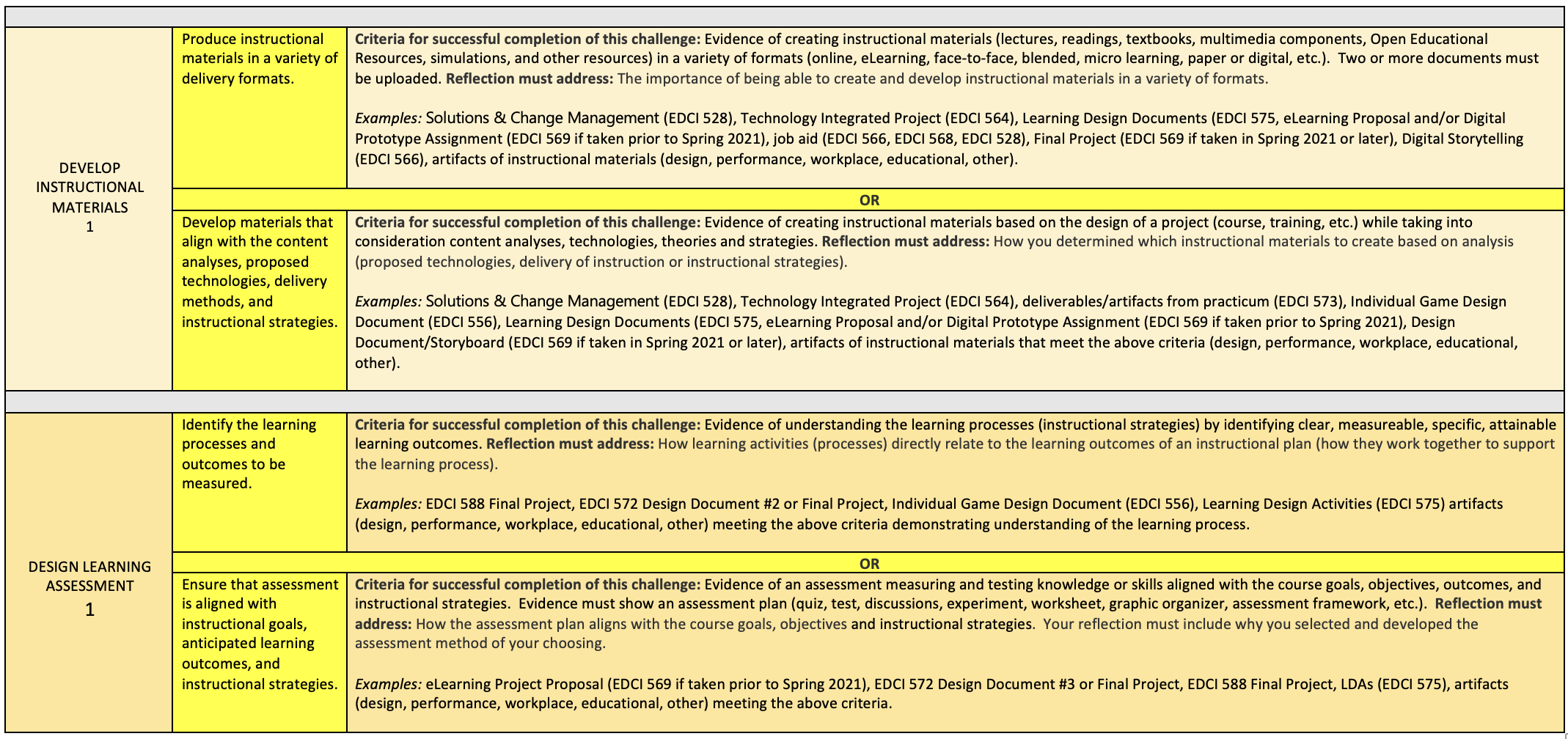
LDT Competencies, Badges, and Requirements Overview
Portfolio Overview
The LDT competencies have four categories (Supra-Badges):
PROFESSIONAL FOUNDATIONS IN LDT (Supra-Badge)
PLANNING AND ANALYSIS (Supra-Badge)
DESIGN AND DEVELOPMENT (Supra-Badge)
EVALUATION AND IMPLEMENTATION (Supra-Badge)
Each Supra-Badge has several sub-badges. Each sub-badge is composed of a variety of challenges. Below is a graphic that provides a brief overview of the structure of a Supra-Badge.
The left-hand column describes the sub-badge. The middle column describes the challenges that make up the sub-badges. For example, complete the sub-badge “ID Professional Communicator,” evidence (two items: artifact/s and self-reflection) must be provided for each challenge. Details of challenge requirements are further noted in the “Challenge Description and Evidence Examples” column in the table below.

Professional Foundations in LDT Overview

Planning and Analysis Flow Process Overview

Design and Development Flow Process Overview



